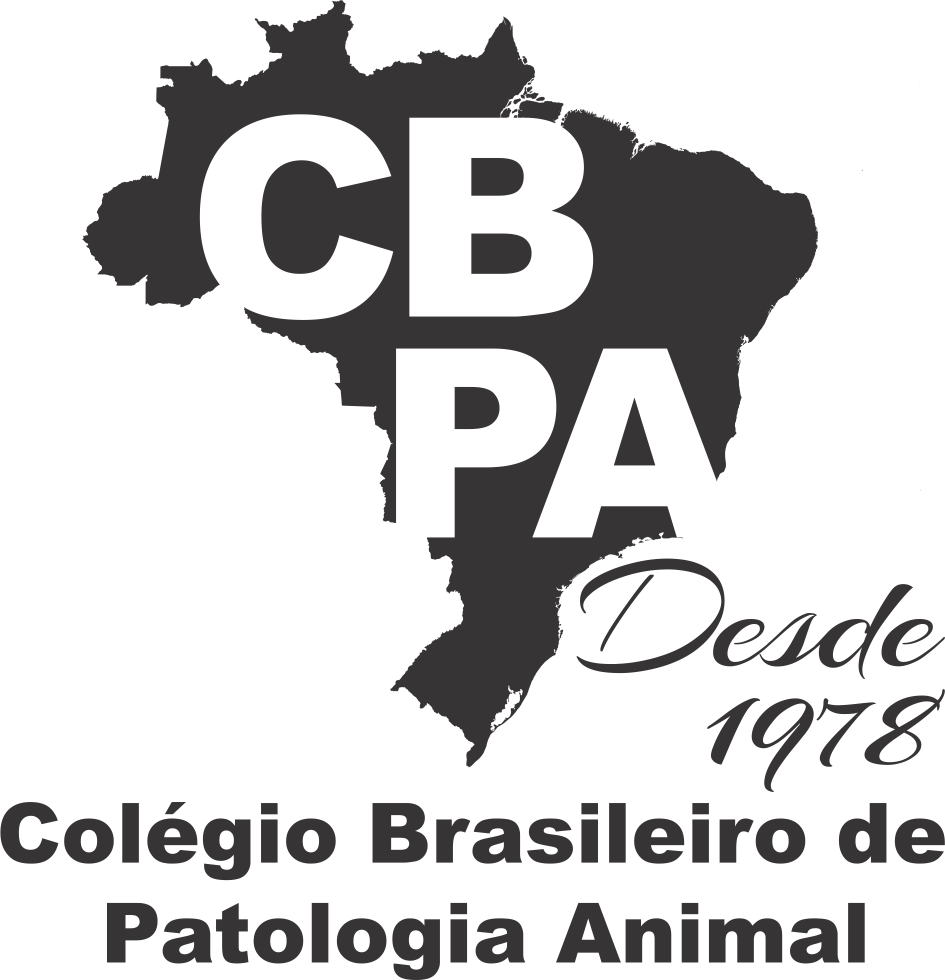Resultado da pesquisa (1)
Termo utilizado na pesquisa Carvalho V.F.
#1 - Wischnewsky spots in cases of fatal hypothermia in cattle
Abstract in English:
Wischnewsky spots (WS) are hemorrhagic, non-erosive, and non-ulcerative lesions that affect the gastric mucosa. They are considered common in the stomachs of humans who have died from hypothermia and are rarely described in other animal species. This study describes the occurrence of WS in cattle that had died of hypothermia in two cities in the state of Mato Grosso do Sul. Two properties were visited, and three cattle were necropsied by the team from the Pathological Anatomy Laboratory of the Federal University of Mato Grosso do Sul (LAP-UFMS). The epidemiological conditions and clinical signs of the cattle examined on both properties were similar. The deaths occurred on days when there was a sudden drop in environmental temperature, with continuous rain for more than 24 hours. During the visits, the most affected live cattle were found in sternal decubitus, with their heads resting on their flanks, or laterally in a comatose state, with nystagmus and a rectal temperature below 32°C. Macroscopically, there were multifocal to coalescent red and black areas on the mucosal surface of the abomasums of the three cattle necropsied, mainly at the apex of the folds, oval or punctate in shape, measuring 0.1 to 1.0cm in diameter. Microscopically, these dark areas corresponded to areas of rarefaction of the mucosal epithelial cells associated with hemorrhage and the frequent deposition of golden-brown pigment (hematin) in the extracellular medium. The diagnosis of hypothermia in cattle was based on epidemiology, clinical-pathological examination, and the exclusion of differential diagnoses. The lesions found in the abomasum of cattle that had died from hypothermia were compatible with WS, highlighting the importance of recognizing them in cases of cattle deaths in which this condition is suspected.
Abstract in Portuguese:
As manchas de Wischnewsky (WS) são lesões hemorrágicas, não erosivas e não ulcerativas que acometem a mucosa gástrica. Eles são considerados comuns no estômago de humanos que morreram de hipotermia e raramente são descritos em outras espécies animais. Este estudo descreve a ocorrência de WS em bovinos que morreram por hipotermia em duas cidades do estado de Mato Grosso do Sul. Duas propriedades foram visitadas e três bovinos foram necropsiados pela equipe do Laboratório de Anatomia Patológica da Universidade Federal de Mato Grosso do Sul (LAP-UFMS). As condições epidemiológicas e os sinais clínicos dos bovinos examinados nas duas propriedades foram semelhantes. As mortes ocorreram em dias em que houve queda brusca da temperatura ambiente, com chuva contínua por mais de 24 horas. Os bovinos vivos mais acometidos no momento das visitas foram encontrados em decúbito esternal, com a cabeça apoiada nos flancos, ou lateralmente em estado de coma, com nistagmo e temperatura retal abaixo de 32°C. Macroscopicamente, havia áreas vermelhas e pretas multifocais a coalescentes na superfície mucosa dos abomasos dos três bovinos necropsiados, principalmente no ápice das pregas, de formato oval ou pontiforme, medindo de 0,1 a 1,0cm de diâmetro. Microscopicamente, essas áreas escuras correspondiam a áreas de rarefação das células epiteliais da mucosa associadas à hemorragia e à frequente deposição de pigmento marrom-dourado (hematina) no meio extracelular. O diagnóstico de hipotermia em bovinos foi baseado na epidemiologia, no exame clínico-patológico e na exclusão de diagnósticos diferenciais. As lesões encontradas no abomaso de bovinos que morreram por hipotermia foram compatíveis com WS, destacando a importância de reconhecê-las em casos de mortes de bovinos em que haja suspeita desta condição.









